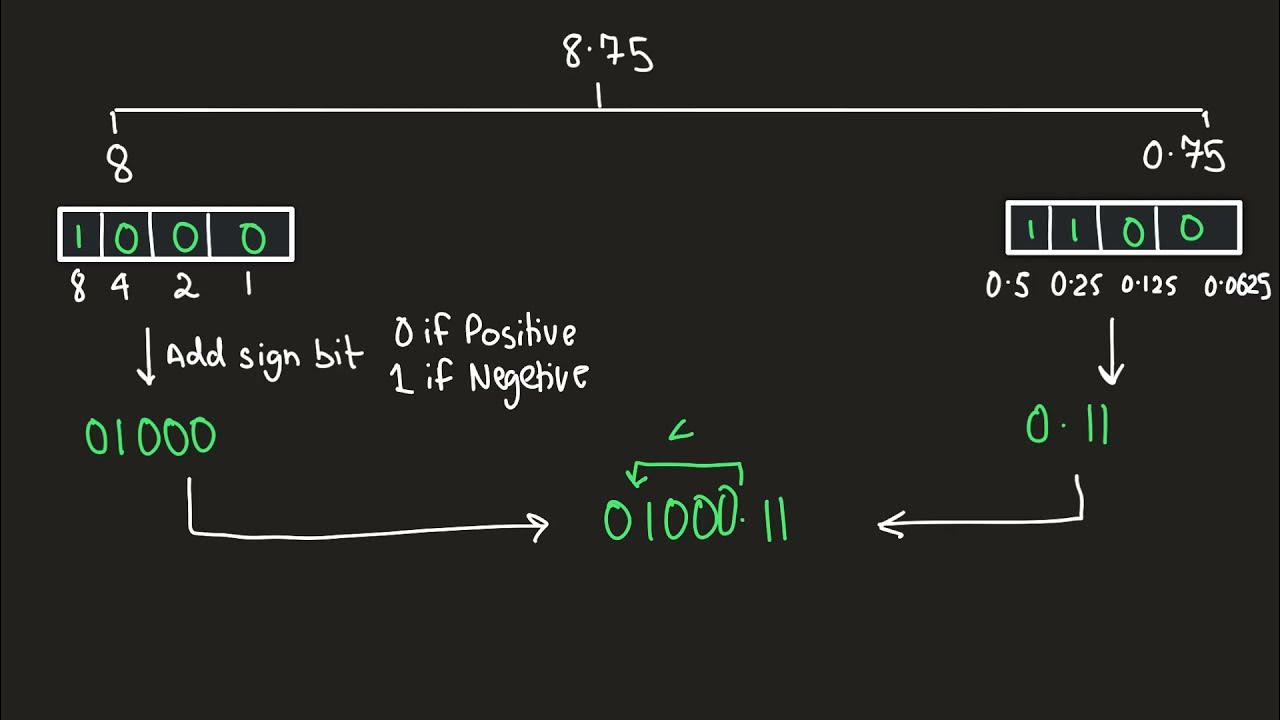Bilangan Kompleks • Part 3: Definisi dan Menyatakan Bentuk Bilangan Kompleks
Summary
TLDRIn this video, the concept of complex numbers is explained in detail. The presenter covers their definition, focusing on the real and imaginary components. Key examples include solving quadratic equations with negative discriminants, showing how roots can be complex. The video also introduces different ways to represent complex numbers, such as in Cartesian, polar, and exponential forms, with a focus on the Cartesian form. The Cartesian method is illustrated through graphical representation on the Argand diagram, using vectors to denote complex numbers. This tutorial helps viewers understand complex numbers through visual and algebraic methods.
Takeaways
- 😀 Bilangan kompleks is a type of number that includes both a real and an imaginary part, commonly represented as 'a + bi'.
- 😀 The imaginary unit 'i' is used in cases where the discriminant (D) of a quadratic equation is negative, leading to complex solutions.
- 😀 A complex number can be expressed in the general form Z = x + yi, where 'x' represents the real part and 'y' represents the imaginary part.
- 😀 If 'y = 0' in a complex number, the number becomes purely real, whereas if 'x = 0', the number becomes purely imaginary.
- 😀 The complex number is visualized in the Argand diagram (a type of Cartesian plane for complex numbers), where the real part is plotted on the horizontal axis and the imaginary part on the vertical axis.
- 😀 In the Argand diagram, the point representing a complex number is denoted by a vector from the origin to the point (x, y).
- 😀 The complex number Z = x + yi is represented as a vector in the Argand diagram with its tail at the origin and its tip at the point (x, y).
- 😀 The term 'Argand diagram' specifically refers to a graphical representation of complex numbers, while the general Cartesian plane is used for real numbers.
- 😀 In the case of purely real numbers (y = 0), the number is located on the real axis of the Argand diagram. For purely imaginary numbers (x = 0), it lies on the imaginary axis.
- 😀 Different methods are available to represent complex numbers: Cartesian form, polar form, and exponential form, with Cartesian being the focus of this video tutorial.
Q & A
What is the general form of a complex number?
-The general form of a complex number is z = a + bi, where 'a' and 'b' are real numbers, and 'i' is the imaginary unit.
What does 'a' and 'b' represent in a complex number?
-'a' represents the real part of the complex number, while 'b' represents the imaginary part, where 'i' is the imaginary unit.
What happens when the discriminant (D) of a quadratic equation is less than 0?
-When the discriminant (D) of a quadratic equation is less than 0, the solutions of the equation are complex numbers, as the square root of a negative number is imaginary.
How do you separate the real and imaginary parts of a complex number?
-In a complex number of the form z = a + bi, 'a' is the real part, and 'b' is the coefficient of the imaginary part 'i'.
What is the condition for a complex number to be purely real or purely imaginary?
-A complex number is purely real if its imaginary part (b) is 0, and it is purely imaginary if its real part (a) is 0.
What is the Cartesian form of a complex number?
-The Cartesian form of a complex number is represented as z = x + yi, where 'x' is the real part, and 'y' is the imaginary part.
What is the difference between a real number and an imaginary number in the context of complex numbers?
-A real number can be represented as a complex number with no imaginary part (b = 0), while an imaginary number has no real part (a = 0) and is purely based on the imaginary unit 'i'.
How do you represent complex numbers in the Argand diagram?
-In the Argand diagram, complex numbers are represented as vectors with the real part (x) on the horizontal axis and the imaginary part (y) on the vertical axis. The vector's coordinates (x, y) correspond to the complex number z = x + yi.
What is a vector position in the context of the Argand diagram?
-A vector position in the Argand diagram is a line that starts from the origin (0, 0) and ends at the point (x, y), which represents the complex number z = x + yi.
What are the three ways to represent a complex number, as mentioned in the video?
-The three ways to represent a complex number are the Cartesian form, polar form, and exponential form.
Outlines

This section is available to paid users only. Please upgrade to access this part.
Upgrade NowMindmap

This section is available to paid users only. Please upgrade to access this part.
Upgrade NowKeywords

This section is available to paid users only. Please upgrade to access this part.
Upgrade NowHighlights

This section is available to paid users only. Please upgrade to access this part.
Upgrade NowTranscripts

This section is available to paid users only. Please upgrade to access this part.
Upgrade NowBrowse More Related Video

Struktur Atom (6) | Bilangan Kuantum | utama, azimut, magnetik, spin

Bilangan Kompleks • Part 15: Modulus dan Argumen Bilangan Kompleks

Data Representation - Mantissa And Exponents Part 3 - (A Level Computer Science Made Easy (A2) )

Hukum Perbandingan Berganda (Hukum Dalton)- hukum dasar kimia

Convert Image into Matrix - Like a Pro!

Discrete Math - 2.1.1 Introduction to Sets
5.0 / 5 (0 votes)